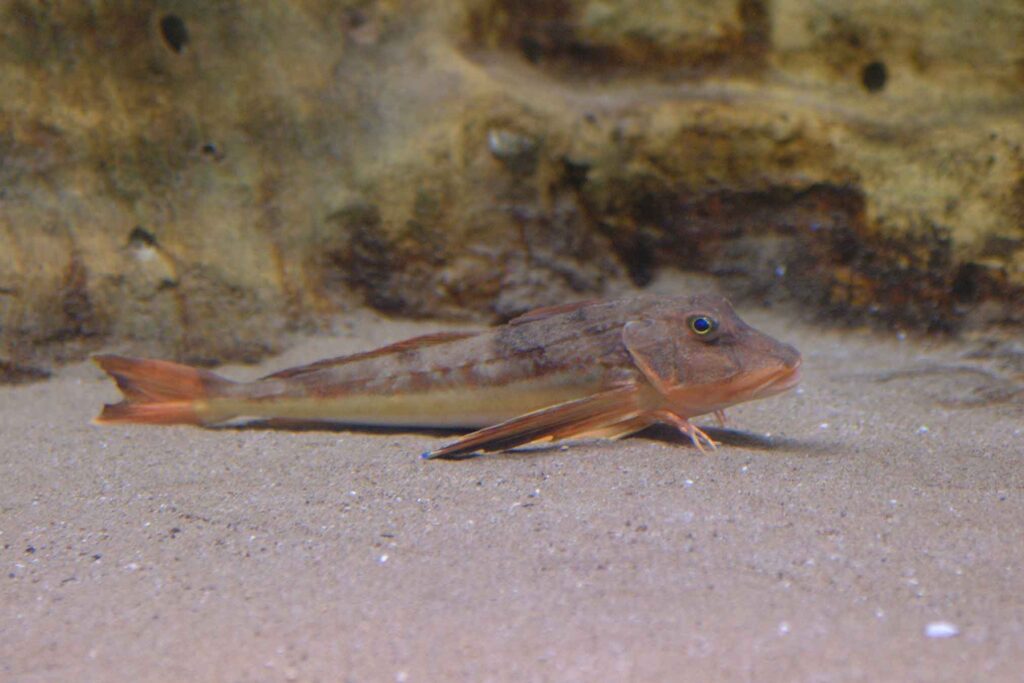
Tub gurnard
Chelidonichthys lucernus
MAXIMUM LENGTH

75 cm
FEEDING

Carnivore
ACTIVITY

Diurnal
They are characterised by a very solid, quadrangular head, completely covered with bony plates full of spines. They are capable of emitting a sound very similar to that of frogs, as they hit the musculature with their swim bladder. It is a species that lives from 5 to 300 m deep on sandy, muddy or gravelly bottoms. Juveniles are often found near the coast, in estuaries and rivers, where they rest on the bottom. Their pectoral fins, which are highly developed and wing-like, have 3 rays that separate from the rest to give rise to small locomotor appendages with specialised muscles and joints. At the ends of these appendages, they have many chemical receptors that allow them to detect prey hidden on the bottom. They feed on crustaceans, molluscs and small fish.
Interesting facts
When they feel threatened, they unfold their pectoral fins to show that they are bigger, so we can enjoy their colouring, with a bright blue border, while they slowly move away over the marine substrate.
Distribution
Conservation status
